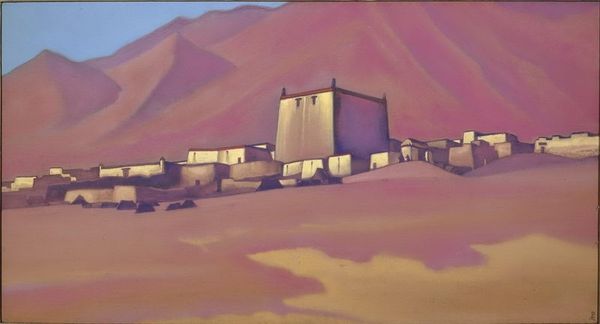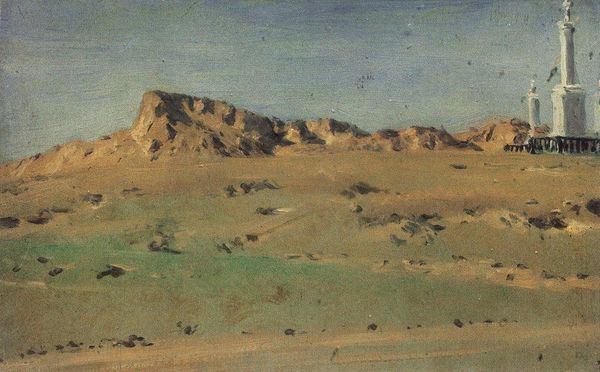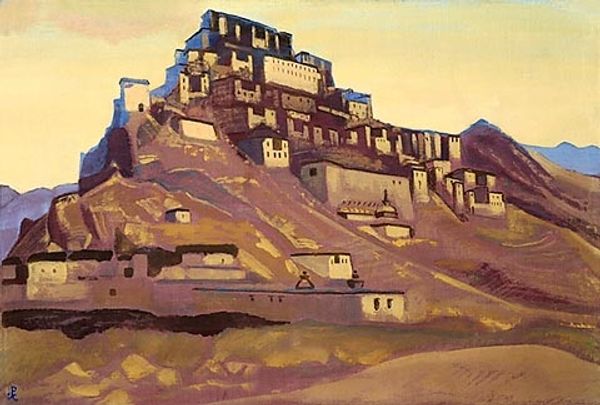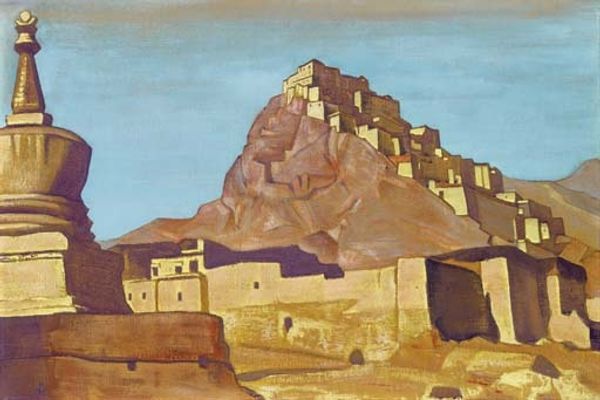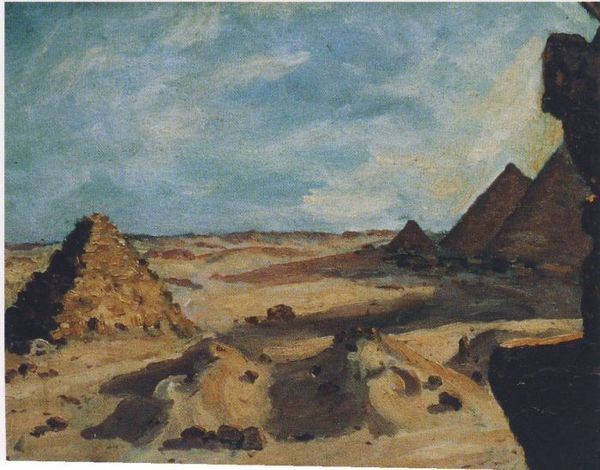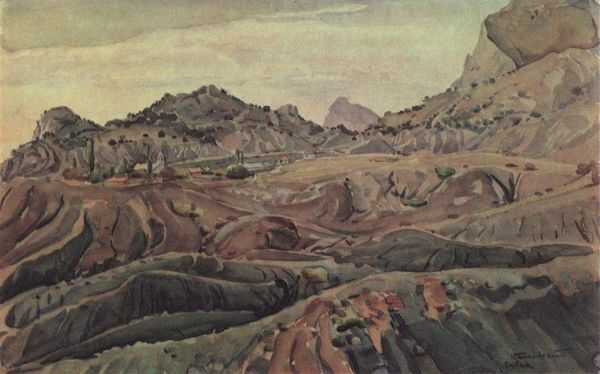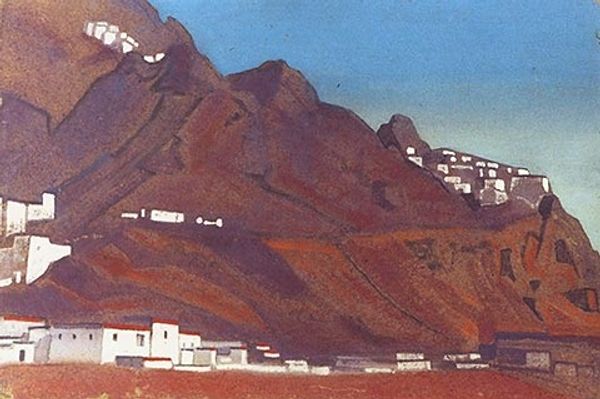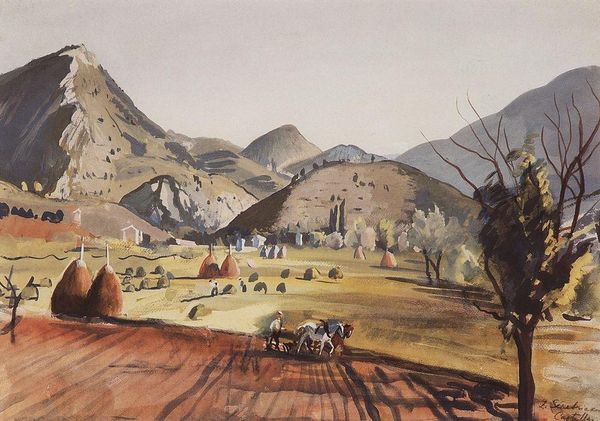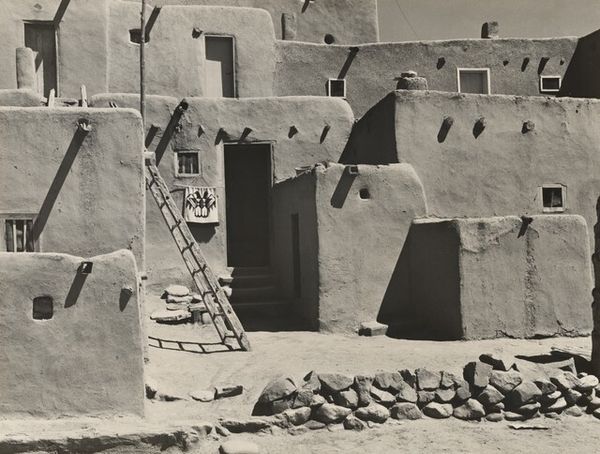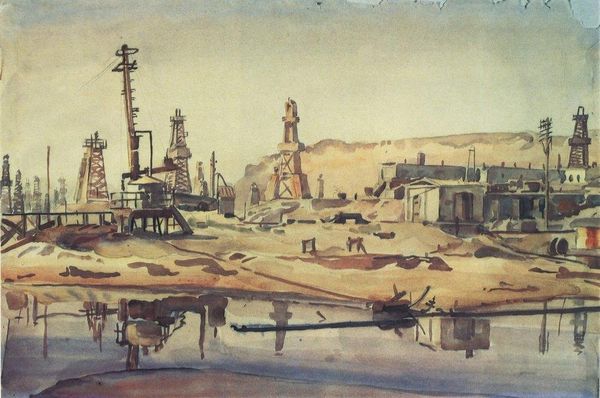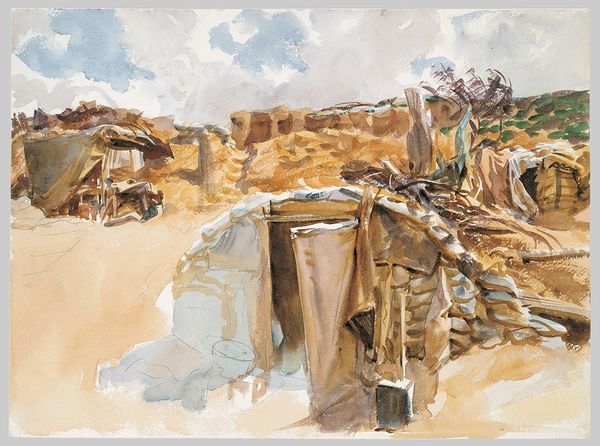
oil-paint
#
oil-paint
#
landscape
#
house
#
oil painting
#
cityscape
#
realism
#
building
Copyright: Edward Hopper,Fair Use
Editor: This is Edward Hopper’s "Adobe Houses," painted in 1925. It's an oil painting depicting a cluster of dwellings bathed in sunlight. What immediately strikes me is the stark simplicity and almost oppressive heat it conveys. How do you interpret this work, especially considering the time it was made? Curator: Hopper painted this in Santa Fe. Consider the complex cultural dynamics at play here. He, as a white American artist, is capturing Indigenous architecture. We must ask: whose story is being told? Is this Hopper offering a genuine glimpse into this community, or is it filtered through a colonial lens? Editor: That's a compelling point. The almost brutal sunlight does seem to flatten any sense of lived experience, reducing the homes to geometric forms. Curator: Exactly. The sharp shadows emphasize this flattening, almost erasing any sign of human activity. What does it mean to depict a culture’s homes as empty vessels? Is this a commentary on the erasure of Indigenous identity, or a reflection of Hopper's own detached perspective as an outsider looking in? And how does it contrast with, say, the contemporary work of Pueblo artists at the time? Editor: So, looking at "Adobe Houses" through this lens forces us to consider issues of representation, cultural appropriation, and the artist's positionality within a complex social landscape. It is not just a landscape—but it reflects complex questions of whose land it is and who is telling the story. Curator: Precisely. Understanding art is always linked to questioning the context within which it was created. It requires grappling with difficult, often uncomfortable, questions about power and perspective. Editor: Thanks, this helped me appreciate how one can interpret an image with all of its cultural complexities. Curator: It was my pleasure! And thanks for bringing fresh eyes to Hopper!
Comments
No comments
Be the first to comment and join the conversation on the ultimate creative platform.
